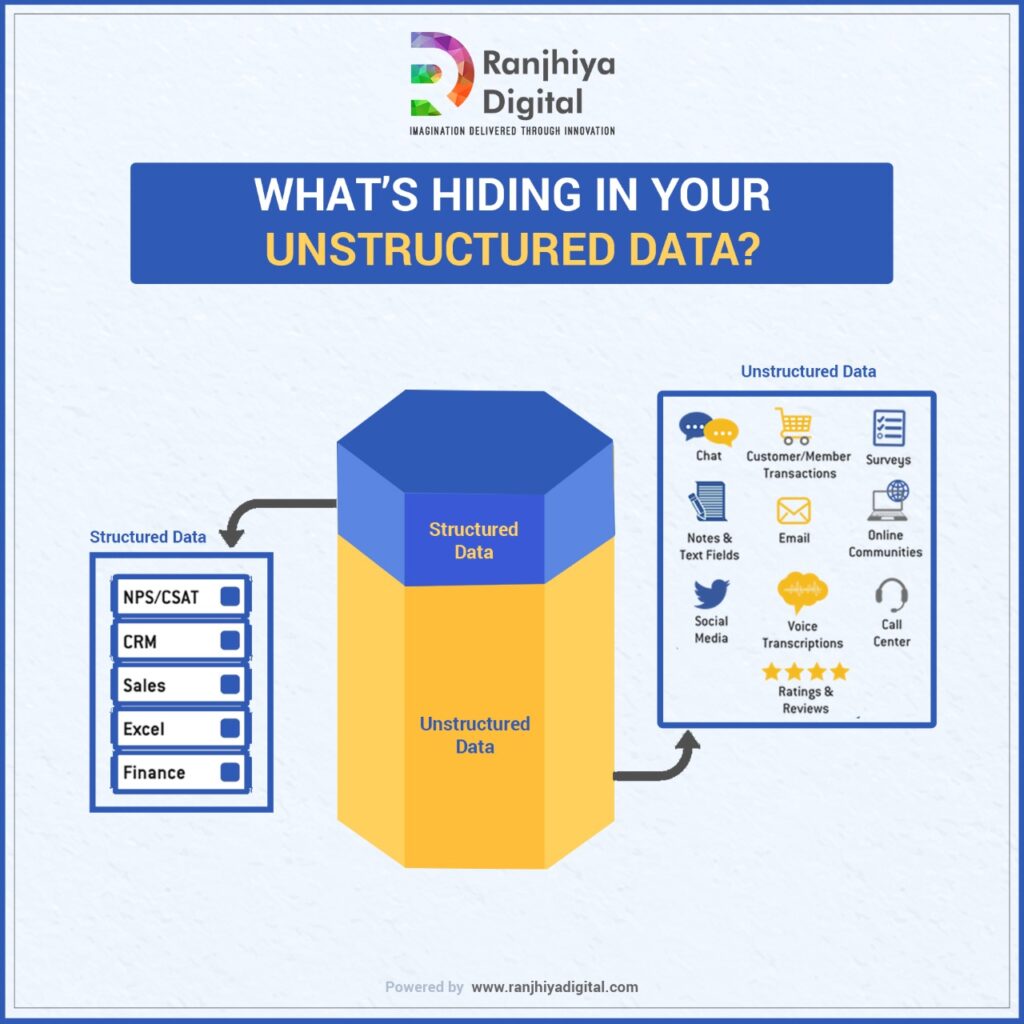Why it’s the hour of need to delve into the untapped insights which is yet to be discovered in your unstructured data.

There are tons of knowledge out there—and it’s growing by the second. Certainly, the huge data being generated every now and then, most of which is unstructured— i.e., it either doesn’t have a predefined data model or isn’t organized in a predefined manner (like open-ended survey responses, social media posts or audio recordings). This 80% of knowledge are often unmanageable but also exceedingly valuable to any organization that looks after improving their member or Customer Experience (CX) and therefore the core of the company.
The important of commentary and feedback is that it comes directly from your customers and is brimming with insights into their experiences and needs. This is because company members and the customers are talking—through social media, emails, chats, surveys, reviews, calls, any platforms which is there to intercommunicate—but are you listening? The cognizance is there, hiding in your unstructured data.
It’s easy to ascertain why most are talking about unstructured data. But what’s it and why is it so important, let’s discuss:
Structured vs unstructured data
Structured data is way easier for programs to know, while unstructured data poses a greater challenge. However, both sorts of data play a crucial role in data analysis.
Structured data
As the word “structured” suggests, this is often data which is very organized and neatly formatted. Structured data is organized in tabular format (i.e., rows and columns) and there’s a relationship between different rows and columns. As such, it’s highly organized and formatted and straightforward to store, process, and access. It can work easily with most traditional analytical models. Most BI tools also skills to figure with it, allowing users to optimize resources from a technical perspective. It also requires less space for storing. Some examples of structured data includes Excel files, Google Sheets, and traditional management Systems (DBMS).
Unstructured Data
Unstructured data is data which isn’t organized in any predefined manner. These are often textual, numbers, dates, or BLOBs (Binary Large Objects). Unorthodoxy and disorderliness within unstructured data is the cause of data handling difficulty and also makes it difficult to understand.
Some key points to understand about unstructured data:
- Report says, approximately 80% of the global data is unstructured
- Can be difficult to process and organize
- Tends to be complex in nature
- Gives more freedom for analysis
- Requires more storage
- Rich media types (images, videos, audio) also can be analysed with advanced technology
- Some examples include text data, social media comments, documents, call transcriptions, various log files like server logs, sensor logs, image, audio, video, etc.
Combining Unstructured Data with Structured to turn acuities into:
Certainly, analysing unstructured data eminently can generate valuable insights, but it’s most powerful when paired with structured data, like names, contact information, and demographics. Combining structured and unstructured data assures detailed insight into trends, the particularities of individual population segments, “centers of influence” which will make or break your brand, major pain points driving lower scores, also as areas of strength that are driving higher scores.
Leveraging all of the info collected—both structured and unstructured—ensures “systematic listening” whereby you’re maximizing value from each and each customer insight datum you’ve got. After all, if you’re only watching 20% of the info created around your organization or brand, how confident are you able to be that your members and customers are satisfied enough to stay buying? At Ranjhiya Digital (www.ranjhiyadigital.com), we have the right Skills, Knowledge, Process, Tools & Technology to have deep insights into Customers Data – Structured and Unstructured and analyse what customers thinks and throws actionable insights.











